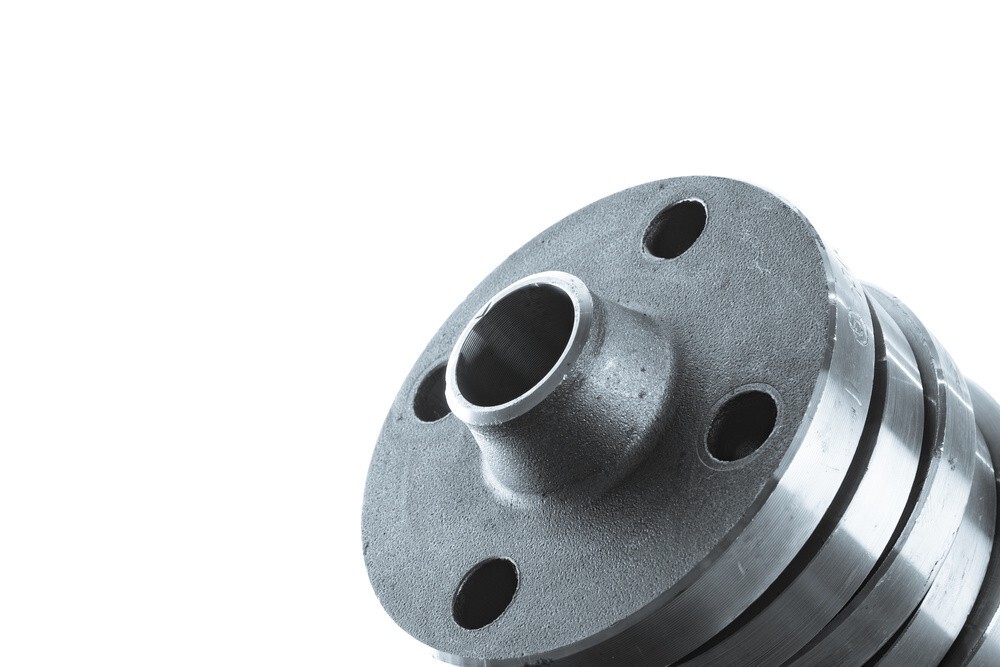What Are Weld Neck Flanges?

The weld neck flange is a type of pipe fitting that provides the connection between two pipes. The weld neck flages also known as wnrf flanges. The weld neck flanges are designed to provide a tight seal when they are connected together. This type of pipe fitting is usually used in applications where high pressures or temperatures need to be contained, like an oil refinery.
Weld Neck Flanges are typically made out of carbon steel and have threaded fittings that allow for easy installation and removal. Weld Neck Flanges can also come with other features like anti-rotation grooves, which help reduce twisting while being installed or removed from the pipes it is connecting.
Weld neck flanges are an integral part of many different industries. Weld Neck Flanges are the most popular type of flange used by plumbers and engineers alike.
The Purpose of A Weld Neck Flanges
A weld neck flange is a type of industrial pipe fitting with an integral raised face. It's purpose is to provide extra strength and rigidity in order to create better pressure against the inside wall of a pressurized vessel or container, such as water tanks and storage silos. They are used for both high-pressure applications (upwards of 20,000 psi) and low-pressure applications (up to 150 psi).
Weld Neck Flanges Working Process
A weld neck flange is a fitting that joins two pieces of piping at the same level. When you look down into the opening, it forms an inverted “U” shape. To work properly, these fittings need to meet specific standards for tightness and durability that are outlined in industry specifications. Weld neck flanges can be made from cast or forged stainless steel, carbon steel and alloy steel.
After the flange is measured using a gauge, it goes through an inspection process to make sure that all of its dimensions are within spec for size and shape. The weld neck flanges get this name because they have a short stubby tube protruding out of them called a neck.
When you are assembling two pieces of piping, the first step is to place a gasket on each side where they will join up with one another. The flange then slides over that joint while it’s still warm and soft from heating in the welding machine or other process used to make it. To create enough force to make a secure seal, the neck is hammered into one of the two pieces.
The final step is to clean it up and add some heat for finishing purposes while also making sure that there are no sharp edges or protruding places on the flange where you could get hurt. Although these fittings offer many advantages over other types, they are not perfect for every situation. They are more expensive than some other options, so they may only be used when conditions require a very specific type of seal to be made or maintained.
Applications:
Weld Neck Flanges are used in oil and gas, chemical processing, power generation, pulp & paper and many other industries. Weld necks flange is designed to join piping systems with a straight-sided opening for the connection of mating flanges or threaded fittings. A weld neck flange can be connected with either welding or bolting.
Advantages:
- Weld neck flange is generally known for its characteristics of mounting face which provides users with an option for welding.
- Weld Neck Flanges are used for applications where there is a need to mount the flange with some space between them.
- Weld Neck Flanges have thicker and stronger bolts than slip on flanges.
- It gives enough room for welding around its circumference so that it can be welded back into position if any damage occurs during installation or normal use.
- Weld Neck Flanges are designed to meet pressures and temperatures required by the end user. They can be used in high pressure applications as well as higher temperature applications, making them a good choice for any industry that requires it.
- Weld neck flanges are strong and flexible in nature, which makes them suitable for high pressure applications as well as higher temperature application.
- They can be used on a wide variety of pipes and tubing that have different diameters or sizes available in the market.
Types Of Weld Neck Flanges
There are main two types of weld neck flanges(WNRF Flanges) and below you can check it:
1. Long Weld Neck Flanges:
Long weld neck flange is the type of WNRF that is used for very large or heavy-duty size and pressure applications. This long weld neck flanges are available in many different sizes ranging from metric to ANSI B16.11, but not all sizes can be made at once.
2. Standard Weld Neck Flanges:
Standard weld neck flange is the type of WNRF that is used for normal applications. This standard weld neck flanges are available in many different sizes ranging from metric to ANSI B16.11, and they can be made at any time without a long lead-time like with Long Weld Neck Flanges.
The Difference Between Weld Neck And Slip On Flange?
A weld neck flange has a smooth raised face that sits flush with the wall of any vessel or container it's used in. This enables it to transfer pressure to the inside wall evenly and without any gaps. A slip on flange is simply a larger version of a pipe fitting, where it slips over the outside edge of an opening (rather than resting in the middle). Slip on flanges are not as strong or durable for pressure transfer, which means they aren't used for industrial applications with high-pressure requirements.
